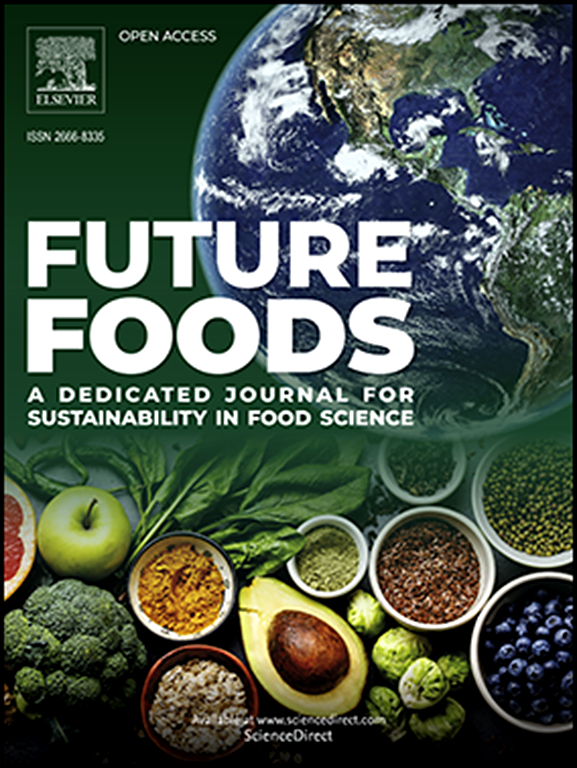布鲁尔的废谷物和粗甘油:脂解耶氏菌生产2-苯乙醇的可持续底物。
IF 8.2
Q1 FOOD SCIENCE & TECHNOLOGY
引用次数: 0
摘要
开发天然、高效、经济的方法生产芳香醇2-苯乙醇(2-PE)是必要的。2-PE具有玫瑰色香味,广泛应用于化妆品、制药、食品等行业。它通常被用作甜点、烘焙食品和饮料中的调味剂,增强水果、蜂蜜、奶油和焦糖味的整体风味。本研究采用中心复合设计,研究了在啤酒废粮(BSG)上发酵脂解耶氏酵母(yrowia lipolytica)生产2-PE的优化工艺。研究了粗甘油(CG)和酵母浸膏(YE)对2-PE生产的影响。利用BSG作为底物的先决条件是水解其复杂成分,主要是淀粉。这是通过将amyloglucosidase (AMG)基因转化到脂肪瘤的基因组中来实现的。在工作体积为100 mL的500 mL折板Erlenmeyer烧瓶中进行发酵。在含有2.87 g/L酵母提取物和45.9 g/L BSG粗甘油的培养基中发酵168 h后,2-PE的最佳产量为1.52 g/L。本文章由计算机程序翻译,如有差异,请以英文原文为准。

Brewer's spent grain and crude glycerol: Sustainable substrates for 2-phenylethanol production by Yarrowia lipolytica.
The development of natural, efficient, and cost-effective methods for producing the aromatic alcohol 2-phenylethanol (2-PE) is necessary. 2-PE, characterized by a rosy scent, is widely used in the cosmetic, pharmaceutical, and food industries. It is commonly utilized as a flavoring agent in desserts, baked goods, and beverages, enhancing the overall flavor with fruity, honeyed, creamy, and caramelized notes. In this study, the optimization of 2-PE production through fermentation of the yeast Yarrowia lipolytica on brewer's spent grain (BSG) was examined using a central composite design. The impact of crude glycerol (CG) and yeast extract (YE) on 2-PE production were investigated. A prerequisite for utilizing BSG as a substrate is the hydrolysis of its complex components, primarily starch. This was achieved by transforming the amyloglucosidase (AMG) gene into the genome of Y. lipolytica. Fermentations were carried out in 500 mL baffled Erlenmeyer flasks with a working volume of 100 mL. Optimally, 1.52 g/L of 2-PE was produced after 168 h fermentation in a medium containing 2.87 g/L yeast extract and 45.9 g/L crude glycerol in BSG.
求助全文
通过发布文献求助,成功后即可免费获取论文全文。
去求助
来源期刊

Future Foods
Agricultural and Biological Sciences-Food Science
CiteScore
8.60
自引率
0.00%
发文量
97
审稿时长
15 weeks
期刊介绍:
Future Foods is a specialized journal that is dedicated to tackling the challenges posed by climate change and the need for sustainability in the realm of food production. The journal recognizes the imperative to transform current food manufacturing and consumption practices to meet the dietary needs of a burgeoning global population while simultaneously curbing environmental degradation.
The mission of Future Foods is to disseminate research that aligns with the goal of fostering the development of innovative technologies and alternative food sources to establish more sustainable food systems. The journal is committed to publishing high-quality, peer-reviewed articles that contribute to the advancement of sustainable food practices.
Abstracting and indexing:
Scopus
Directory of Open Access Journals (DOAJ)
Emerging Sources Citation Index (ESCI)
SCImago Journal Rank (SJR)
SNIP
 求助内容:
求助内容: 应助结果提醒方式:
应助结果提醒方式:


